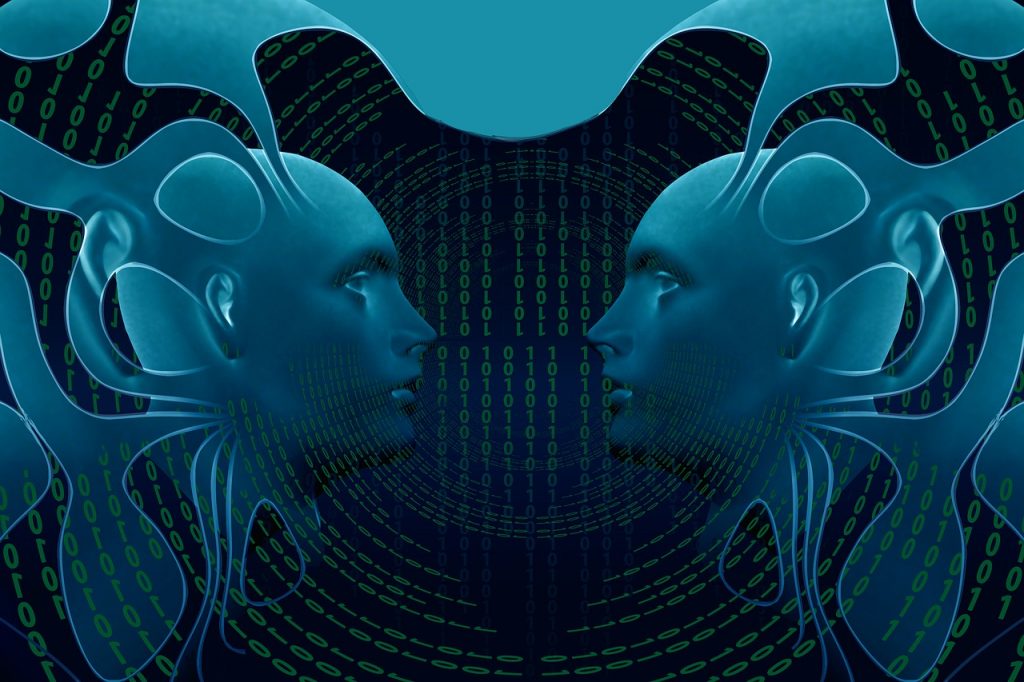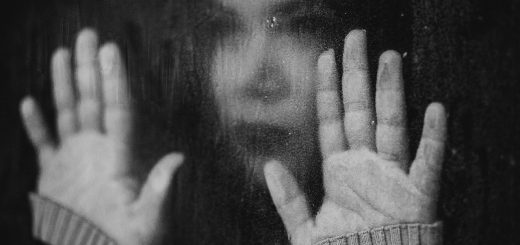Medicalisation of Society – Trauma
This is an older post on mental health that I have written on another blog of mine. You can find the original post from April 2018 here.
Different times in history have had a focus on different illnesses. That kind of comes with the nature of survival, up until the late 18th century most people did not live past 40, all depending on where you lived and which social class you belonged to. The focus was on curing illnesses that we today simply can get rid off with some antibiotics or know how to avoid through proper hygiene. So with the improvement of somatic medicine, most people do not worry about physical health as much. There is cancer, there is HIV, sure, but dying from the sniffles or a stomach bug, that is not common anymore. I am of course talking from a privileged Western perspective, in many third world countries, worries about physical health might look very different.
Illnesses are Historically Contextual
So what does medicine, society, and what do we focus on instead? Mental health issues, of course! If our physical survival is kind of secure, we have time to look for other things that could be improved. I guess that is how we humans work, that is how progressive society works, heck, that is how evolution works. Fixed one thing, let’s see what else there is to fix. And with that comes what many historians call the medicalisation of society.
Our modern society has medicalised struggles that just a century ago did not get any focus at all, or have not been seen as illnesses. Alcoholism and addiction are a good example of that. Addiction was seen as a weakness of character, often found with the poor, and was frowned upon. Now it is seen as an illness. Or ADHD, another example of medicalisation of a behaviour. In 1918 a kid being hyperactive and unfocused in class would have gotten their face slapped and put in detention. It can most definitely also go the other way around. Homosexuality has been for long (and still is in some part of the world) been defined as an illness. Today most inhabitants of the Western world would strongly disagree with that definition.
While our medical diagnostic books today are much thicker than they were 500 years ago, does that mean that those behaviours, symptoms and struggles are new? Yes and no. An illness is often defined by its historical context. Today we would say an illness is something that we suffer from and that makes it impossible for us to function on a day to day basis, and one’s symptoms fit the requirements for a diagnosis. That makes sense to most of us. And mental illness fits very well with that too.
Mental Illness in History
But when was mental illness even recognized as an illness within a medical context? Without giving a lecture on the history of psychiatry here, let’s just say that mental health issues have long been ignored, or been taken care of in secret, often in the family. The Ancient Greeks already spoke of melancholy, in Medieval times people with visions were thought to be in touch with the divine, in the late 18th century the great confiment (Foucault wrote an interesting book about that, hint hint) began, in the 19th century people still got locked up, but mostly women were seen as neurotic and mentally deviant.
Even up until the 1970s even in our oh so praised Western world, people with mental health struggles were lobotomized and sterilized against their will. There are accounts of what we would today call bipolar disorder and schizophrenia already from centuries ago. But I am not sure if anachronistic perspectives, or diagnosing people that have never actually spoken to a mental health professional, is especially fruitful.
Traumatic Experiences in History
So. Having thought about all that, I have had an interesting thought the other day! What about trauma? Thinking of all the atrocities that have happened throughout human history, people must have had trauma and the number of people with symptoms fitting the diagnosis of PTSD, C-PTSD, OSDD and DID must have been high. Right? Why is there almost no literature on that? Why were those so common illnesses today (well, apart from DID), not common before? I think the answer lies in what I have just described. It is contextual!
Of course people went through very traumatic events but events like that were way too common to be seen as deviant. Losing a child? Getting raped? Having an abusive childhood? Been stuck in a cult (hello, church?)? Seeing people get murdered? Experiencing war? Those traumas were so very common for most people, they were part of the general experience. And then there was survival too. People were way more focused on getting food on the table, taking care of the family, leisure time for themselves, with time to think, reflect or even feel, was limited.
After WW1 and WW2 millions of people were traumatized, again, it was an experience that most Europeans went through, no one was much different from the other, everyone had seen the atrocities, suffered from hunger, have had loved ones die. But new terms were coined: Shell Shock, War Tremors. Symptoms would very well fit into the PTSD category of diagnosis today. The focus on the emotional turmoil began to be more widespread, psychology had just started to become more accepted.
After the wars, Western society changed. A lot of European countries went into a direction of social democracy with free healthcare, free education, social support, unemployment rates were low, new technological advances, more leisure time, different pressures. Even in North America, Oceania and some Asian countries a similar kind of development could be observed. Safety, no threats, possibilities, better physical health, we lived longer, poverty went down.
We have been stripped from national traumas
All that stripped us from national traumas, from societal traumas, from things that everyone went through. In that safer environment being traumatized stuck out. The general experience was now one of a safe childhood, of female empowerment, of a voluntarily enlistment for war, of education for all, of freedom and prosperty. Okay, we all know that the picture perfect life is more something that the media has painted for us. But generally speaking, most people can imagine what a “normal and healthy life” should look like.
A lot of the behaviours that cause the victims of trauma harm are now criminalized. We now recognize them as morally wrong, might it be sexual assault, child abuse and neglect, domestic violence, conditioning, even bullying, harrassment and insulting. That makes it very obvious in society that those things are wrong, a taboo, demonized. And of course it makes it also very obvious for the victims of such crimes that what they have been through is not part of the general experience. might it be through media, through recognizing the laws, by someone telling them so. The dichotomy between what is wrong and what is normal is a strong one.
What does that mean for trauma? Trauma is fortunately not a general experience anymore. We can all enjoy mostly safe lives now, and the risk of being traumatized is much lower. But for the victims of trauma, or the people who have been through traumatic events, the alienation can be overwhelming. Campaigns like #MeToo might make it seem differently, but no every victim ends up with a trauma diagnosis, Being diagnosed with PTSD, C-PTSD, OSDD and DID today means that one has been through traumatic experiences, experiences that are very different from the experiences that people in general go through today, and that have made it impossible for the person to function on a day to day basis even after the trauma is not happening anymore.
When society is generally healthier, the individual experience, the individual struggles and the inner turmoils become visible. That is why trauma today is different from trauma just 100 years ago. That is why flashbacks, suicidality, dissociation and self-hatred have more space to thrive. Because there is freedom now. We have been stripped from general traumas, but with that we have unveiled the atrocities that human beings can do to each other on a very different level












What a wonderful well structured and well written article – so glad u linked it up DS <3
Regarding things such as child abuse/incest – they were really very much ignored in previous generations and TBH I think that sometimes in very rural setting they are still ignored – even in our fortunate modern society.
Thanks, May! Times change, and priorities in society change with them, eh?
yeah and I think in rural places even these days they think they are outside of “society rules” – like they are living a hundred years ago – it is odd!
Great article ? Really excellent points.
Another important aspect is the socio-historical context and interpretation of conditions and behaviour in keeping with the dominant cultural viewpoint of the time. I’m thinking specifically of possession in the Medieval and Early Modern period, and hysteria and “wandering womb”. These were conditions attributed to (mostly) women as a way of explaining behaviours that clearly derived from trauma and illness. In our scientific and medicalised age, these are now understood in the context of illness. It makes one wonder how these things could be interpreted five hundred years from now! ?
Thank you! Yes, ideas of possession or the idea of having a special divine connection were fairly common during the Middle Ages up until the late 17th century, at least in the West, In other parts of the world, these kinds of conceptions are still quite widespread today.
Yes, don’t start with me on the wandering womb, haha. I also like the the idea that if a woman jumps over a fence, there is a risk there her testicles will drop out! ha!
I am quite convinced that in 500 years, treatment of mental illness will be focused on neurology, rather than psychology!
I think that’s a very perceptive prediction, and daresay you’re right. Oh yes, wandering womb! like so many of the ridiculous ideas about women’s bodies, just ignorant and offensive!